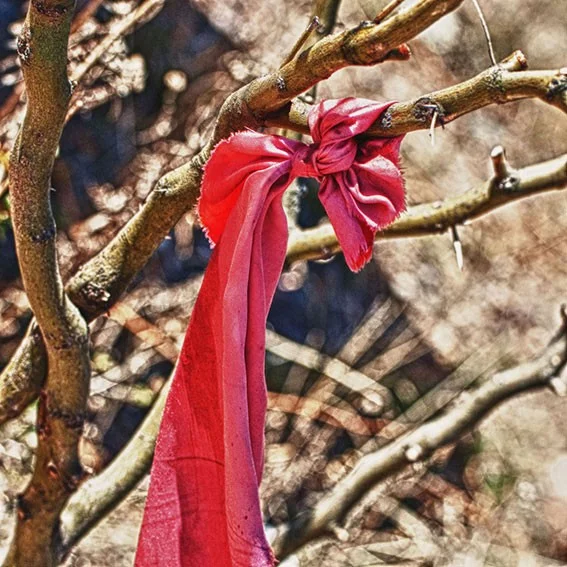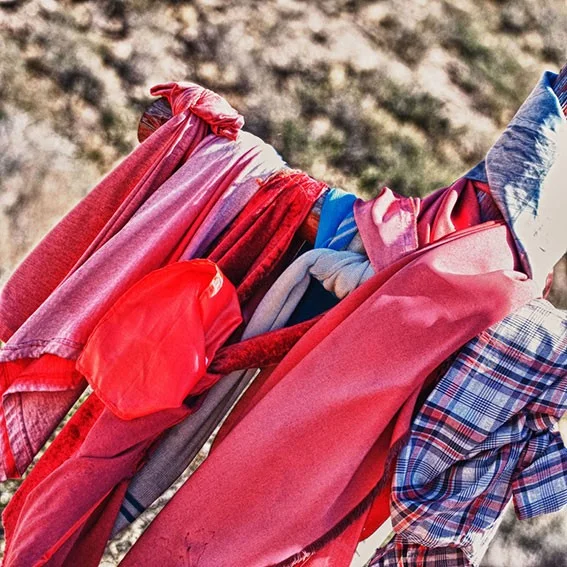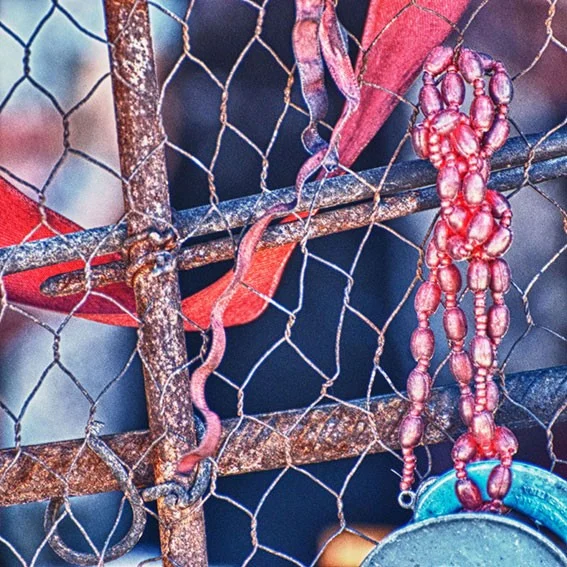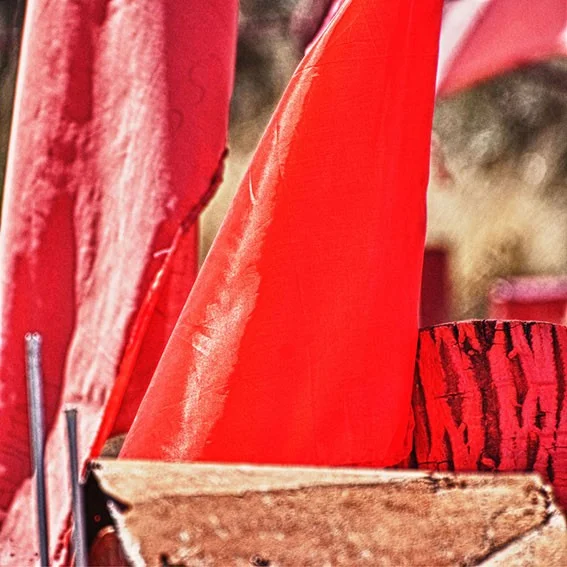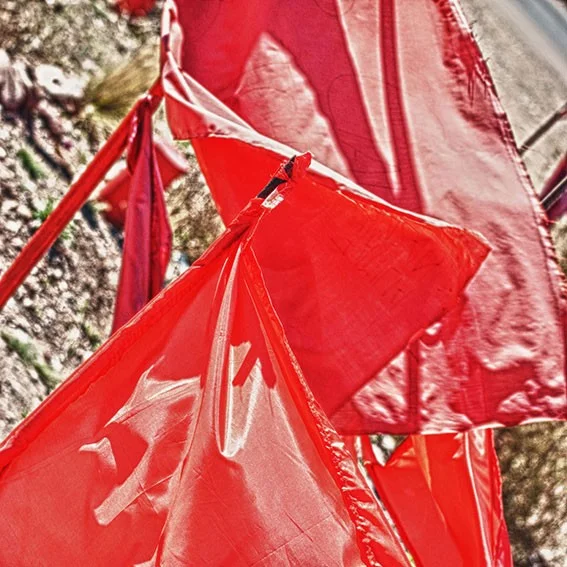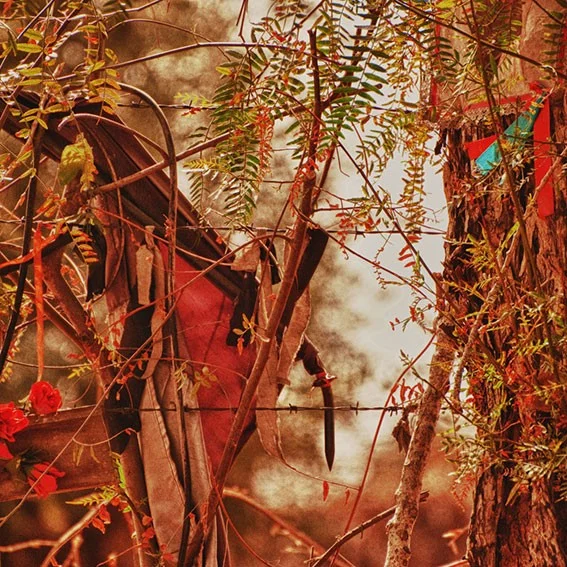For ALTAR project.
Faith, Art, Altar and Installation
By Julio Sánchez, Art curator.
An altar on the side of the road is like the tip of an iceberg. Above, on the surface, you just see a ninth of what lies underneath. This is not buried, it is made up by dozens of questions asked by Daniel Romano (and all those that once felt attracted to this magical magnet): why do people feel the need to create their own space to pray?, why is it on the road?, what do they ask for?, what are they thankful for?, why are they devoted to a given saint?, how does the devotion begin?, how do they keep it? All these questions seem to come from a profane person. Certainly, the person who chose a site on the side of the road, put a brick over the other to build that little chapel, painted it in red and placed a figure of Gauchito Gil knows all the answers. It seems that the urban man, who pays more attention to his brain than to his heart, has abandoned faith. Or maybe we have reached a time in history when little altars on the road, which appear more and more frequently every day and adopt new sacred figures, start to wear away the hard bark of reason. This phenomenon is really old and emerged in the Middle Ages, at those places where a miracle happened, where a relic was found, or where a superior being able to cure, restore or beat negative forces simply appeared. The extraordinary event demarcates the sacred territory, and all things around it are transformed: the first candle that is lighten to honor the saint starts an infinite sequence that seems endless. At this very moment, a devotee is lighting a match to illuminate an image.
The fact that images appear outside the sacred space of a church is not a minor detail. Dogmatic faith, with its rigid precepts, is draining away, such as Tao said: “The hard and strong will fall. The soft and weak will overcome.” Actually, one may think that faith does not die, but instead it transforms, gets out of “authorized” spaces and slips into common places, at an urban corner, on the side of the road, at some dull place that, due to the work of some unknown force, transforms into an attraction center, even a peregrination center. Those who regularly visit museums, galleries and cultural centers, and are familiar with the term “installation,” many times feel tempted to see those altars of multiple shapes as true artistic expressions; the display of objects, colors and smells could be easily found at some artist´s studio.
Daniel Romano embraces this creativity to place his own altar on an ambiguous territory between faith and art. His own altar includes more than one hundred photographs of other altars, where we can see the silent faces of Saint Expedite, Difunta Correa, Holy Death, Our Lady of Fatima, Virgin Mary Undoer of Knots, Ceferino Namuncurá, Pancho Sierra and Gauchito Gil, among many others; a gallery of old and young saints, which may be classic or modern. They are not alone: apart from the omnipresent candles, we can find gifts with origins so diverse that defy the most daring imagination. All these elements are compiled in the work of an anthropologist-sociologist-artist, after months filled with trips, observations and logs.
In synch with this age, Daniel Romano rescues a social phenomenon which is increasingly stronger, the currency of popular faith, its continuous transformation, and above all, the use of an expressive language that it clearly shares with contemporary art.
Julio Sánchez
Degree in Art History (U.B.A.) and
Master´s Degree in Cultural Affairs
...............................................................................................................................................................
La fe, el arte, el altar y la instalación.
Por Julio Sánchez, Curador.
El altar de la ruta es como la punta de un iceberg. Arriba, en la superficie se ve apenas un noveno de lo que hay abajo. Lo que hay abajo no está enterrado sino que está constituido por las decenas de preguntas que se hace Daniel Romano (y todos los que alguna vez fuimos atraídos por ese imán mágico): ¿qué mueve a las personas a inaugurar un espacio propio de oración?, ¿por qué en las rutas?, ¿qué piden?, ¿qué agradecen? , ¿por qué la devoción a tal o cual santo?, ¿cómo se inicia la devoción?, ¿cómo se mantiene?. Todas estos interrogantes parecen las de un profano, seguramente quien eligió un lugar al costado de la ruta, levantó ladrillo por ladrillo aquella pequeña capilla, la pintó de rojo y emplazó una estatuilla del Gauchito Gil tiene todas las respuestas. La fe parece haberse divorciado del hombre urbano, más afecto a la razón que al corazón. O quizá haya llegado el momento histórico en que los pequeños altares de ruta, que cada vez son más, que cada vez adoptan más y nuevas figuras sagradas, empiecen a roer la corteza dura de la razón. El fenómeno es muy, muy viejo y eclosionó en la Edad Media, en aquellos lugares donde ocurrió el milagro, donde se encontró una reliquia, o donde simplemente apareció un ser superior capaz de curar, restaurar o vencer las fuerzas negativas. El suceso extraordinario marca el territorio sagrado, todo alrededor de él se transforma, la primera vela que se enciende para honrar al santo inicia una secuencia infinita que parece nunca acabarse, en este mismo momento un devoto está encendiendo un fósforo para iluminar una imagen.
Que las imágenes salgan del espacio sagrado de una iglesia no es un dato menor. La fe dogmatizada, aquella de los preceptos rígidos, fue mermando, tal como lo dice el Tao, lo rígido muere, lo blando permanece. En realidad uno puede pensar que la fe no muere sino que se transforma, se sale de los espacios “autorizados” y se filtran en los espacio cotidianos, en un rincón urbano, al costado de la ruta, en algún lugar insípido que por obra de quien sabe que potencia, se transmuta en un centro de atracción y hasta de peregrinación. Los que frecuentamos museos, galerías y centros culturales, los que conocemos el término “instalación”, muchas veces nos vimos tentados de considerar esos altares multiformes como verdaderas expresiones artísticas; el despliegue de objetos, colores y olores, bien podría recrearse en algún taller de artista.
Daniel Romano aprovecha esta creatividad para ubicar su propio altar en un territorio ambiguo entre la fe y el arte. Su propio altar está acompañado por más de un centenar de fotografías de otros altares, donde se pueden ver los rostros mudos de San Expedito, la Difunta Correa, San Lamuerte, la Virgen de Fátima, la Virgen Desatanudos, Ceferino Namuncurá, Pancho Sierra y el Gauchito Gil entre otros tantos, una galería de santos viejos y jóvenes, clásicos y de moda. Ellos no están solos, además de las velas omnipresentes hay ofrendas, de procedencias tan variadas que desafían a la imaginación más audaz, todo esto está testimoniado en un trabajo de antropólogo-sociólogo-artista que ha demandado varios meses de viajes, observación y registro.
A tono con la época, Daniel Romano rescata un fenómeno social cada vez más fuerte, la vigencia de la fe popular, su transformación constante, y sobre todo el uso de un lenguaje expresivo que a todas luces parece compartir con el arte contemporáneo.
Julio Sánchez
Licenciado en Historia del Arte U.B.A. y
Master en Gestión Cultural
